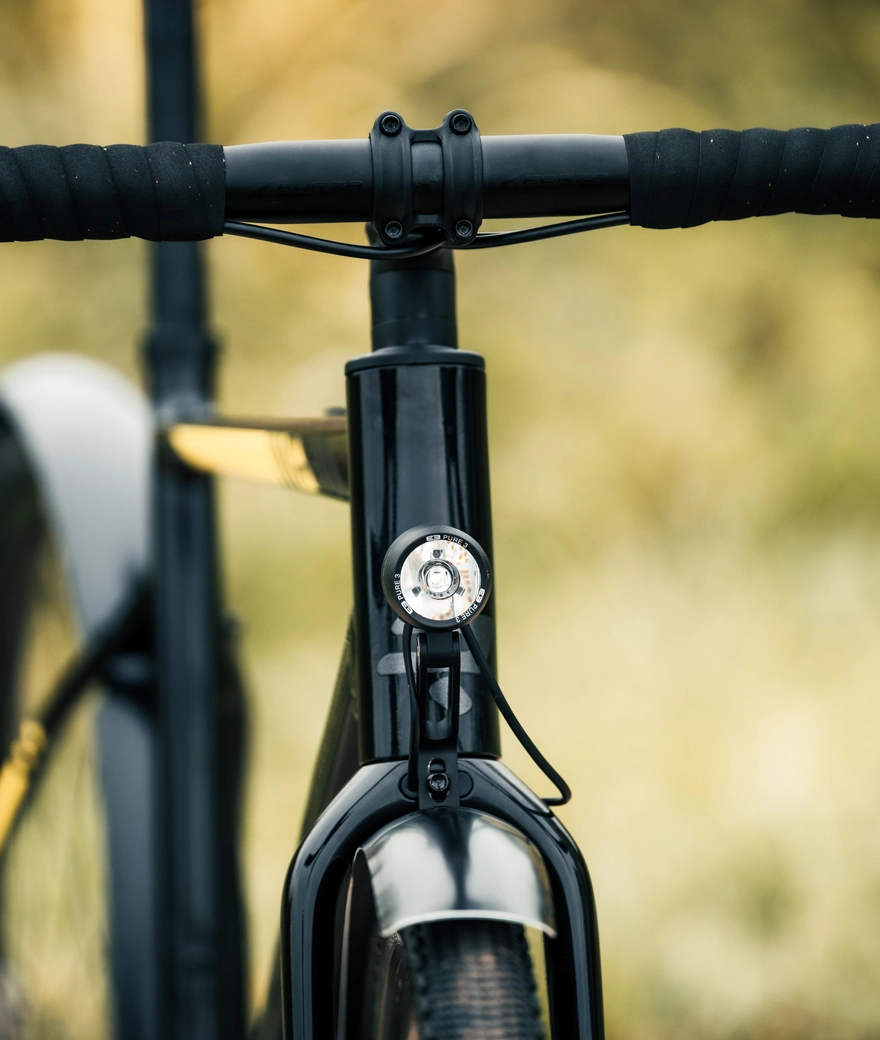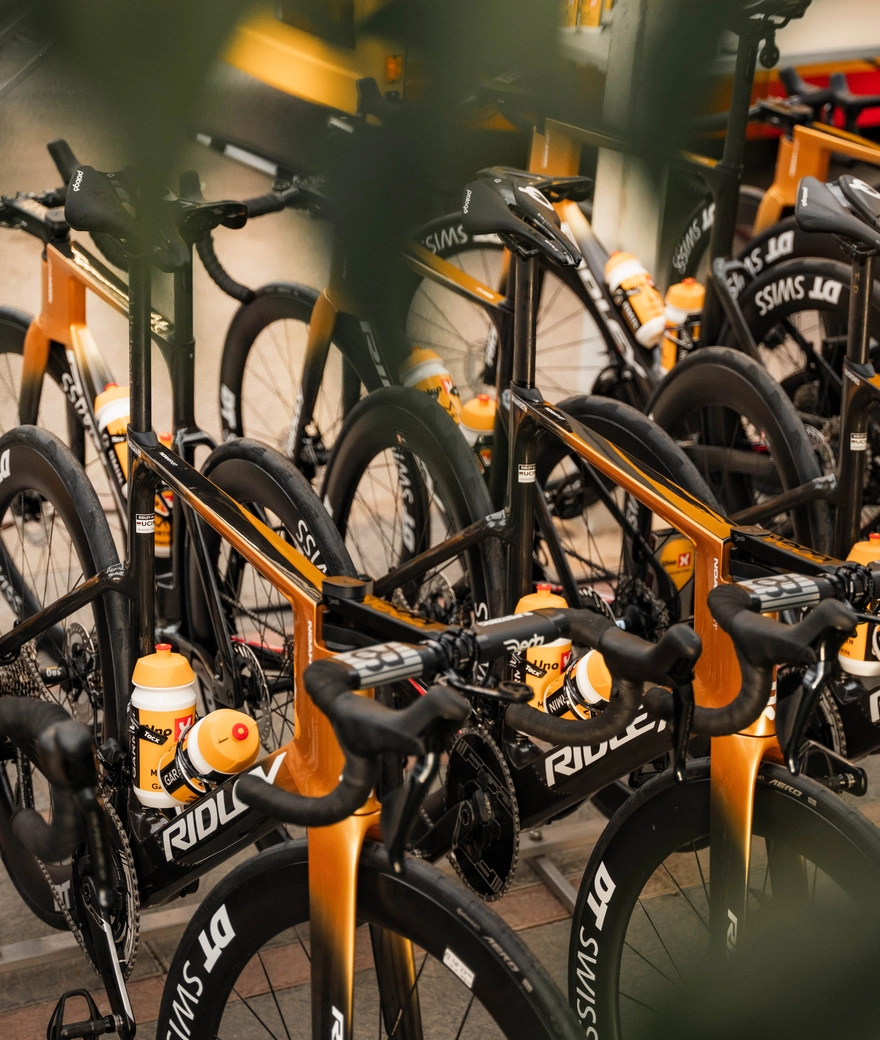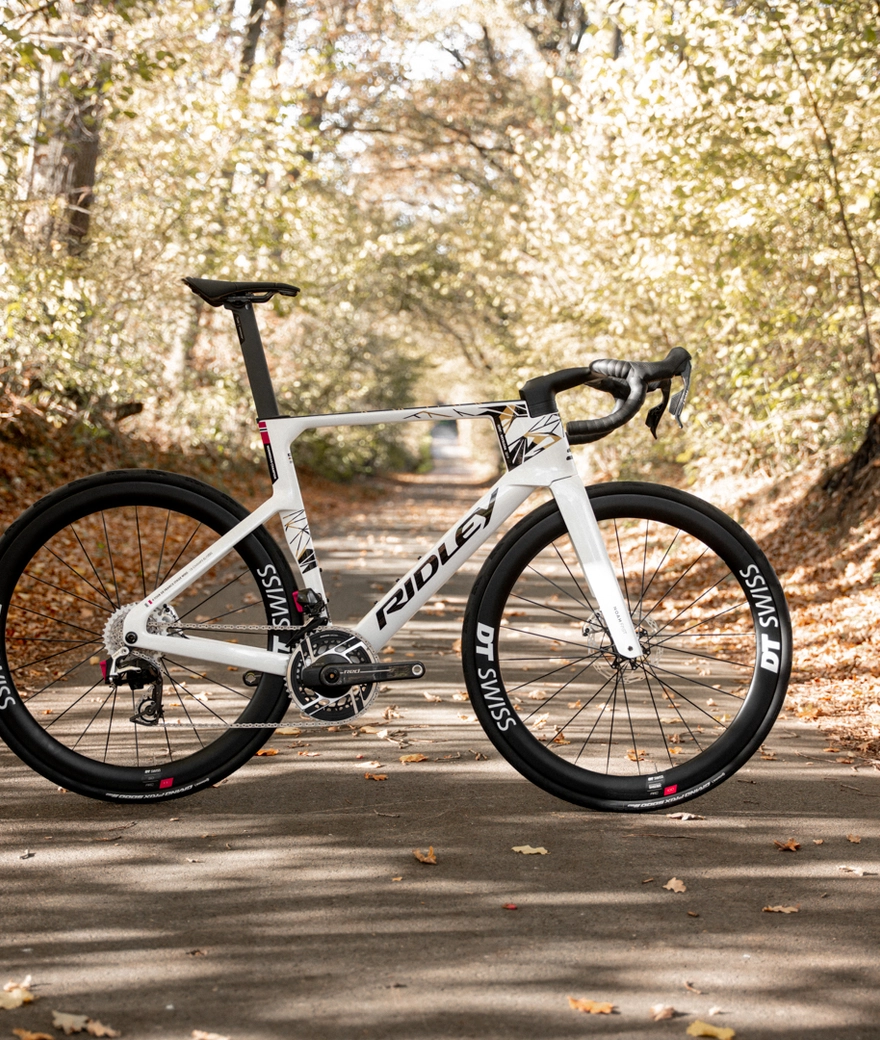Traveling the world on a Kanzo Adventure
Hi! We’re Franklin and Josien. We met at the finish line of a triathlon in Prague back in 2018. While we may love triathlons, bikes are the one thing we cannot live without. Since October 2020 we’ve been traveling around the world – by bike, of course. In this blog we share all our experiences as well as lessons learned. Have fun reading!
Our journey kicked off in Tanzania. From there we went to Brazil, Nepal, Armenia, Uzbekistan and now we are finishing up our cycling trip in Tajikistan. We’re currently riding the Pamir Road – a dream come true!
A Kanzo for every Adventure
Traveling by bike was the obvious choice for us. We didn’t want to miss the experience of riding a bike for an entire year. As a bonus, a bike can take you to places a car cannot. The bike gives you more freedom to explore nature and meet local people.
Choosing the right bike proved, though, to be a bit more challenging. Franklin spent countless hours researching the ideal bike. We wanted a drop-bar style bike that handles like a road bike, but can withstand every crazy gravel adventure we were planning to undertake. Basically, the bike needed to be flexible.
The Kanzo Adventure was the perfect fit for the job. We opted for non-electronic Shimano GRX 2x11. While Di2 is fun to shift, it’s impossible to repair in the middle of nowhere. As we didn’t want to take any risks, we simply opted for mechanical shifting.
In the beginning of our road trip back in 2020, we were very inexperienced with this type of adventuring. In fact, we took our first test ride with all bags mounted in Tanzania. Countless hours on the bike and seven countries later, we became comfortable “bike-packers” and have surely learned many things along the way.
Advantages of the Kanzo Adventure
Speaking from the heart, now that we have lots of experience under our belts, we can unequivocally say that having the right bike for your intended adventure is absolutely critical.
When we ride asphalt, we love to ride smooth and fast. When we ride gravel and rocky roads, we prefer more comfort. That’s why we don’t mind changing our tires depending on our destination.
In comparison to a road bike and some other gravel bikes we checked out, the Kanzo Adventure proved quite versatile in its’ possible tire width range. It lets you mount tires varying from 23mm straight up to 50mm. Officially the max is 29”x 47mm or 28”x 50mm, but the only tires we could get in Nepal were 28”x 54mm. To our very pleasant surprise, they fit as well!
With this configuration we could easily ride the Annapurna Circuit, which led us over a 5416m pass in the Himalayas. Sure, there was some walking involved when it was too steep, but most parts we could ride.
To clarify, when we say the Kanzo Adventure is ‘flexible’:
- With the 38mm tires we could ride almost anywhere in Tanzania, Brazil and Armenia. We enjoyed over 6000km of asphalt, but also rough gravel rides in the Savannah and sandy roads in Brazil.
- With the 54mm tires we converted the Kanzo Adventure to a semi-mountain bike in Nepal. There we rode singletracks, gravel roads, and mountain passes. With a bit less tire pressure, we also had built-in suspension.
- As a Kanzo Adventure owner, Franklin found himself never returning to his ‘inflexible’ road bike. Instead, back home in Switzerland, he now uses one bike for everything - simply switching between two sets of wheels. One set equipped with 25mm tires for asphalt and the other with 38mm tires for gravel.
Tougher than you think
Having gears that instill confidence…that’s worth a lot. This is why we selected the Shimano GRX groupset. It’s known to be more robust and is specifically designed for gravel bikes.
In Nepal we really went down some rough roads, with big rocks and we had zero mechanical problems. In addition, the sand, sun and snow didn’t cause any issues.
We always try to ride, but two times we had to load the bikes on top of a car. This happened in Nepal when we came across a treacherous, snow-covered mountain pass that we had to cross.
The second time was in Tanzania after Josien miscalculated her efforts. We rode ten hours through the burning sun on a stony, sandy road to Lake Natron. The next day we walked 21km through the conservation area. That same night Josien ambitiously decided to climb Ol Doinyo Lengai. Let’s just say it turned out to be more challenging than the Kilimanjaro.
The plan was to ride back upon returning from the mountain. But after walking from midnight till 9am, another hard 10+ hour ride seemed like a very bad plan. We decided to load the bikes on the roof of a van and drive back to Lake Manyara.
In the van we heard the noise of the bikes slamming on the roof every time we hit a bump. We hit a bump every single second...pfff. It was the worst three-hour car ride ever. We were almost crying, anticipating that the bikes would be broken in half and the cycling part of our trip would be over.
When we arrived, Franklin offloaded the bikes and Josien was too afraid to look. But to our big surprise, the bikes were in perfect condition. Every part survived - unscathed even! We attached the bags and 10 minutes later we were ready to hit the road again.
After riding 7,000km with 90,000m of elevation gain in the last months, we are thrilled to say that we had no technical issues with the bike, other than the ones we created ourselves. What do they call that again…operator error? And from those mistakes, we’ve certainly learned a lot.
Here are our best tips on how to avoid our “lessons learned”
Tip 1 - Check all nuts, bolts and screws after riding a lot on bumpy or gravel roads.
Certain gravel roads are very demanding on your bike. The bags will create forces on nuts/bolts/screws which may cause them to loosen a bit. Checking them in the evening after a heavy gravel ride might take you 10 to 15 minutes, but it can save you from very unpleasant moments during the next rides.
Imagine you’re riding on a dangerous, high pass and suddenly your bags decide to ditch the bike and travel off on their own…yep, not fun.
Tip 2 - Be careful hanging your handlebar pack on your shifting cables. When the bag is in the wrong position and bending the cables in the wrong direction, they slowly get more and more damaged and will eventually stop working.
Tip 3 - Bring enough spare parts if you go to remote places/countries. For example, we had difficulties finding the correct brake pads in Armenia and Uzbekistan. We ended up paying ten times the price we would have paid back home. We did bring four spare spokes and two spare derailleur hangers. We also had two disc brake pads, but we should have brought more.
Tip 4 - This is about our least favorite topic: punctures. We had so many of them in Tanzania and Brazil. The hard shoulders on roads are riddled with rubbish from truck tires. We installed tire liners, but another option would be puncture prevention noodles or going tubeless.
Choose the right bags for the right trip
We love that the Kanzo Adventure offers all possibilities to attach bags or paniers. This was for us one of our main requirements when selecting a gravel bike for traveling. Not all bikes we evaluated had mounting points on the fork, seatstay, and under the down tube.
We always try to travel extra light, especially when lots of climbing is involved. For example, during the Annapurna ride, Josien brought just a frame bag and saddle bag.
We only bring all the bags if there is no other option. Such as for in the Pamir region in Tajikistan. Depending on the selected route in this region, there can be stretches of four to six days without any villages and food supplies. During a trip like this we bring everything: food, camping gear, cooking gear, medication, winter clothes, water, etc.
For a route like this we make use of almost all options the Kanzo Adventure gravel bike offers to attach bags:
- Handlebar
- Saddle
- Frame
- Top tube
- Fork
- Down tube
This bike also offers the option to attach larger paniers on a rack in the front and rear, but we opted to skip these to keep that sporty feeling However, from a packing perspective the larger paniers are way easier.
Now to incorporate this bike-packing lifestyle into “normal” life
During this zany adventure, we absolutely fell in love with this new way of exploring the world by bike. We didn’t plan much, and we literally took our first test-ride in Tanzania. We’re the first to admit that we were real bike-packing rookies back then.
After traveling for almost a year now, it’s just about time to return home. Back to reality and back to work. But we refuse to let go of this lifestyle. When we’re back in Switzerland, we want to keep this spirit alive by exploring more of our own backyard. We are already looking forward to packing our bags on a Friday afternoon to hit the road with our gravel bikes. Now we can finally ride all the roads we previously had to avoid with our road bikes and can spend the night camping in the mountains. And maybe instead of driving or going by train to visit Josien’s family in the Netherlands, we will bike there - via France and Belgium. There are countless options to use this awesome bike, and for this we don’t have to travel to the other side of the world.
While we’ll continue with triathlons, there are other types of riding and racing that have since caught our eye: unsupported gravel racing and long-distance cycling. We gained some experience this year and are now up for a new challenge. All that’s left to do is select our next adventure!
Curious to see more of our trip? You can follow us via www.instagram.com/tri.to.travel or www.tritotravel.com





